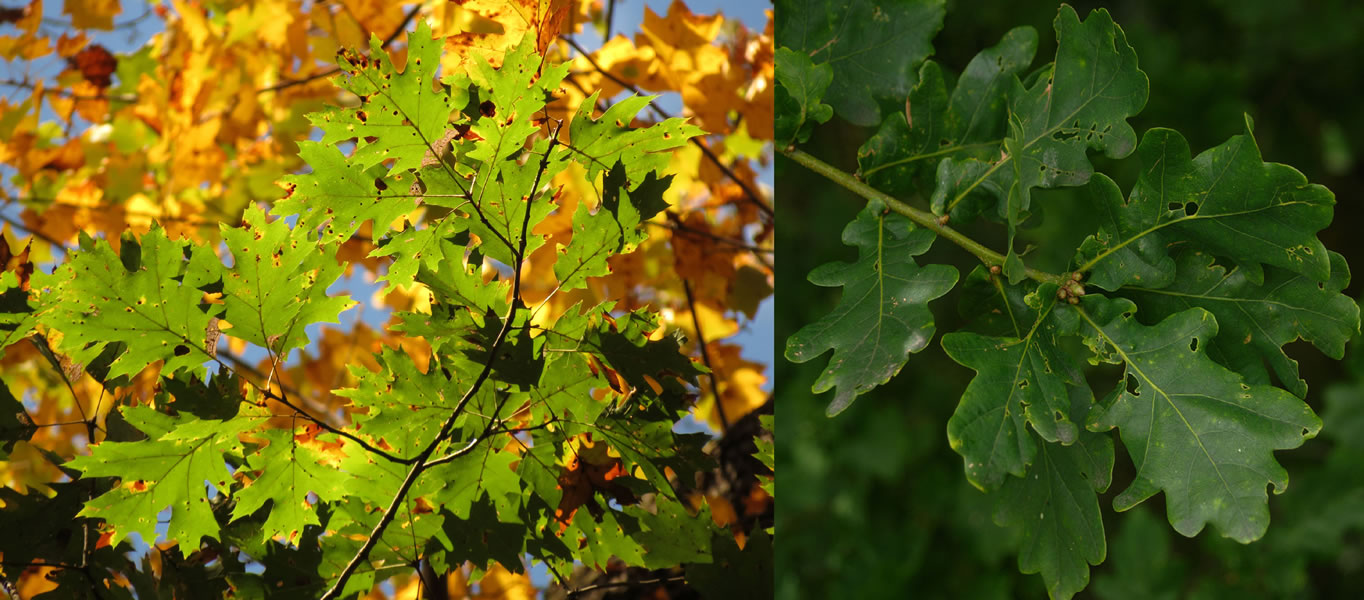Picky pathogens help non-native tree species invade
Introduced tree species are exempt from the constraints that soil pathogens impose on native trees, aiding their ability to spread rapidly in new areas
July 24, 2019
For Immediate Release
Contact: Zoe Gentes, 202-833-8773 ext. 211, gro.asenull@setnegz
Walk into a forest made of only native trees, and you probably notice many different tree species around you, with no one species dominating the ecosystem. Such biodiversity – the variety of life and species in the forest – ensures that each species gets a role to play in the ecosystem, boosting forest health and productivity. However, when non-native trees invade, they form dense groups of a single species of tree. This bucks conventional wisdom because, in theory, pathogens – microscopic disease-causing organisms – should prevent this from happening.
Trees have many natural enemies, such as herbivores and insects that nibble on their leaves. But their main foes are invisible to the naked eye. In older forests especially, fungal pathogens evolve to attack the seedlings of certain tree species and, over time, accumulate in the soils around the adults, hindering the growth of their seeds. Seeds that fall far away from their parent typically survive better. The pathogens thus help dictate where native trees can grow and prevent some species from dominating others.
This effect is part of the Janzen-Connell hypothesis, a widely accepted explanation for the promotion of biodiversity in forests. The theory was developed in the 1970s by ecologists Daniel Janzen and Joseph Connell, who said that species-specific herbivores, pathogens, or other natural enemies make the areas near a tree inhospitable for the survival of its seedlings. If one species becomes too abundant, there will be few safe places for its seedlings to survive, thus promoting the growth of other plant species within one area.
Why, then, do introduced tree species often invade, outcompete, and displace native trees, even those of the same genus? The subject is the focus of a new study published in the Ecological Society of America’s journal Ecosphere.
Aleksandra Wróbel, a PhD candidate in the Department of Systematic Zoology at Adam Mickiewicz University in Poland, says that the relationship between native trees and their enemy pathogens is a tightly co-evolved one; so tight, in fact, that pathogens may not be able to recognize or attack even closely-related introduced tree species. “Enemy-release” theory states that because introduced species are new to the ecosystem, they do not have enemies yet in the soil, and their seeds can fall densely and thrive, becoming invasive. This relaxation of the Janzen-Connell effect, says Wróbel, “gives non-native species a big competitive advantage over native species.”
To test how the intensity of the effect differs between tree species of a same genus, Wróbel and colleagues use greenhouse and field experiments to study two pairs of invasive and native tree species in Central Europe: boxelder (Acer negundo) vs. Norway maple (Acer platanoides), and Northern red oak (Quercus rubra) vs. pedunculate oak (Quercus robur). They also conduct surveys of natural forests containing populations of all four species to investigate their survival in an uncontrolled environment.

Boxelder maple trees, Acer negundo (left) and Norway maple trees, Acer platanoides (right) are different species from the same genus: Acer. Boxelders are native to North America, however, and are invasive in Central Europe where they were introduced as park trees and spread quickly in new places, competing with the Norway maple and other natives. Photos courtesy of Jean-Pol Grandmont (left) and James St. John (right).
Under controlled conditions, the invasive species of both pairs fare better than their respective native cousins, avoiding attack by soil pathogens; they are released from the Janzen-Connell effect, giving them the survival advantage. However, under natural conditions, one genus pair (Acer) followed the expected pattern, with non-native seedlings escaping pathogen attack, while the other pair (Quercus) did not. Wróbel chalks this up to the complexity of interactions with other plants and animals that tree seedlings experience in the wild.

Northern red oak trees, Quercus rubra (left) and pendunculate oak trees, Quercus robur (right) are different species from the same genus: Quercus. Northern reds are native to North America, and are the fourth-most significant invasive species in western and central Europe. Photos courtesy of Katja Schulz (left) and Mehmet Karatay (right).
This study indicates that freedom from disease partially explains why non-native tree species dominate in areas where they are introduced. Improving understanding of the role that plant–soil interactions play in the establishment and spread of invasive plants is critical for developing effective management and control strategies.
“Figuring out why invasive species are able to proliferate so readily in new areas is one of the most important issues in ecology and nature protection,” concludes Wróbel, “and the results of our research provide additional insight into the factors responsible for the success of certain non-native species.”
Journal article
Authors
Aleksandra Wróbel, Rafał Zwolak; Department of Systematic Zoology, Faculty of Biology, Adam Mickiewicz University, Poznań, Poland
Elizabeth E. Crone , Department of Biology, Tufts University, Medford, Massachusetts, USA
Author contact:
Aleksandra Wróbel lp.pwnull@1a_leborw
###
The Ecological Society of America (ESA), founded in 1915, is the world’s largest community of professional ecologists and a trusted source of ecological knowledge, committed to advancing the understanding of life on Earth. The 9,000 member Society publishes five journals and a membership bulletin and broadly shares ecological information through policy, media outreach, and education initiatives. The Society’s Annual Meeting attracts 3,000-4,000 attendees and features the most recent advances in ecological science. Visit the ESA website at https://www.esa.org.